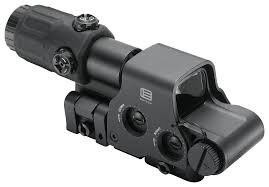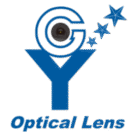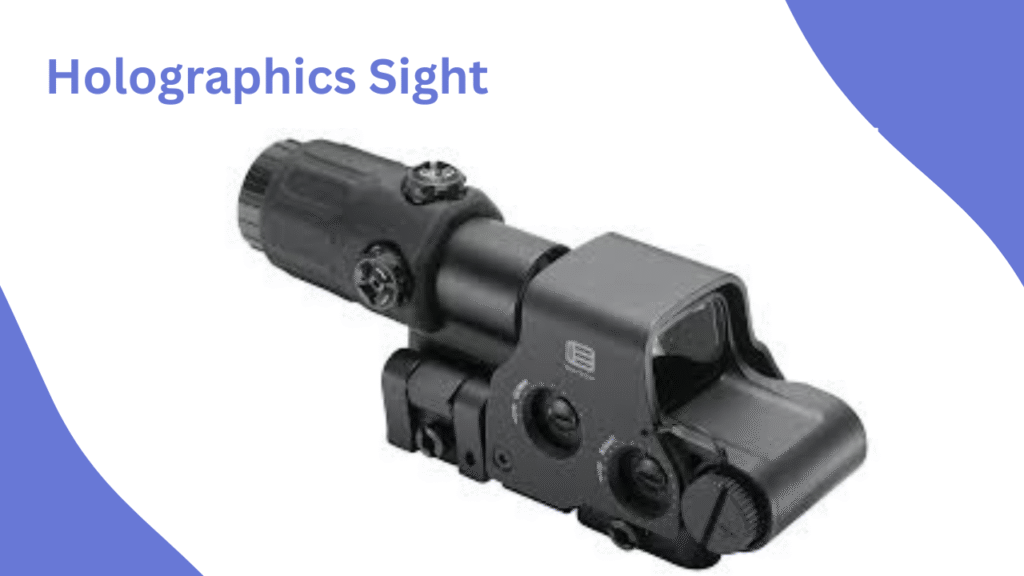Choosing the right sight can make a big difference in how well you shoot. Both red dot sights and holographic sights are popular options for shooters who want faster target acquisition and improved accuracy. However, each type of sight has unique features that make it better suited for different situations.
In this guide, I will explain what red dot sights and holographic sights are, how they differ, and which one may be better for your needs. By the end, you’ll have a clear understanding of which option fits your firearm and shooting style best.
What is a Red Dot Sight?
A red dot sight is a simple aiming device that projects a small red dot on a lens. You align the dot with your target to shoot more accurately.
Key features of red dot sights:
- Lightweight and compact design.
- Long battery life.
- Easy to use for beginners.
- Works well for short to medium distances.
Best for: casual shooters, hunters, home defense, and beginners looking for an affordable, easy-to-use sight.
What is a Holographic Sight?

A holographic sight uses a laser to project a reticle pattern (often a circle with a dot) inside the lens. Unlike a red dot, the holographic reticle remains clear even if your eye position changes.
Key features of holographic sights:
- Reticle stays visible and sharp even when moving.
- Faster target acquisition in tactical situations.
- Works well for shooting at moving targets.
- Usually bigger and heavier than red dots.
Best for: tactical shooters, military, law enforcement, and competitive shooting.
Red Dot vs Holographic: Main Differences
Here are the main points that separate red dot sights from holographic sights:
- Reticle Design:
- Red dot = single dot.
- Holographic = detailed reticle, easier for fast aiming.
- Speed:
- Red dot = good for beginners.
- Holographic = faster for trained shooters.
- Battery Life:
- Red dot = lasts much longer (hundreds to thousands of hours).
- Holographic = shorter battery life.
- Size and Weight:
- Red dot = smaller, lighter.
- Holographic = larger, heavier.
- Price Range:
- Red dot = more budget-friendly.
- Holographic = usually expensive.
Pros and Cons of Red Dot Sights
Pros:
- Lightweight and compact.
- Very long battery life.
- Simple to use for beginners.
- Affordable compared to holographic sights.
Cons:
- Reticle is just a dot, less advanced.
- Less effective for complex or tactical use.
Pros and Cons of Holographic Sights
Pros:
- Reticle is clear and easy to use even when moving.
- Very fast target acquisition.
- Better for advanced or tactical shooters.
- Good performance in high-stress environments.
Cons:
- Heavier and bulkier.
- Expensive compared to red dots.
- Battery runs out faster.
Which Sight Should You Choose?
- Skill Level:
- Beginners → Red dot.
- Experienced or tactical shooters → Holographic.
- Type of Shooting:
- Hunting, home defense, casual shooting → Red dot.
- Military, competition, tactical training → Holographic.
- Budget:
- Tight budget → Red dot.
- No budget limit, need advanced features → Holographic.
Common Mistakes to Avoid When Choosing
- Choosing only based on price.
- Ignoring if the sight fits your firearm.
- Not testing under real shooting conditions.
- Overlooking weight and comfort.
- Forgetting to check battery life.
Avoiding these mistakes will help you get the most value and best performance from your sight.
Conclusion
Both red dot sights and holographic sights improve accuracy and targeting speed, but they serve different purposes. Red dots are great for beginners, casual shooters, and those who want something affordable with long battery life. Holographic sights, on the other hand, are better for tactical and professional use, offering fast aiming and a clearer reticle.
The best choice depends on your skill level, budget, and shooting environment. Carefully consider your needs, and you’ll find the sight that makes your shooting experience more accurate and enjoyable.

